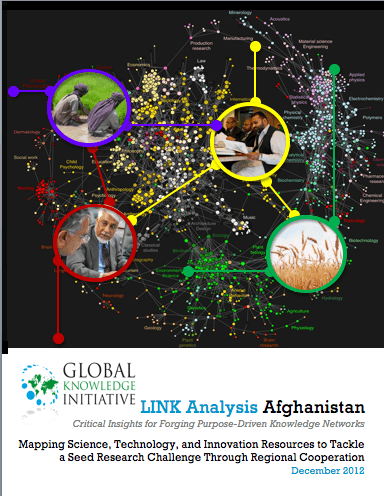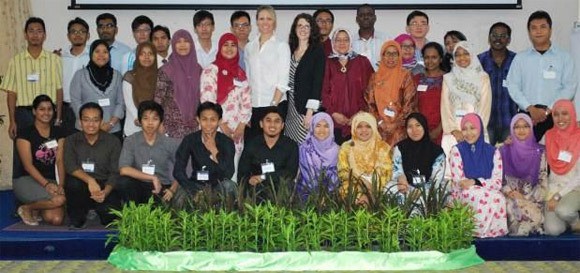Nourishing the Future through Innovation: Food Systems
This multi-part blog series on food systems, security, and innovation.
Food systems are crucial in nourishing populations, supporting livelihoods, and forming the backbone of economies worldwide. They encompass an intricate network of activities and entities related to food production, processing, distribution, and consumption. At the heart of these systems lies the goal of food security, which ensures everyone has access to sufficient, safe, and nutritious food that meets their dietary needs for an active and healthy life.
The food industry includes all entities involved in the supply chain, from farmers and processors to retailers and consumers. Each system has its unique set of practices, challenges, and opportunities. Understanding the intricacies of the food system and its underlying systems is crucial for formulating policies and innovations that promote food security, sustainability, and overall global well-being.
The Five Parts of the Food System
Production: This is the first phase in which food is grown or produced. It includes agriculture, aquaculture, and livestock-rearing practices that contribute to creating food products.
Processing: Post-production, food undergoes processing to enhance its shelf-life, safety, taste, or nutritional value. Processing can involve cleaning, packaging, preserving, and other forms of processing that prepare food for distribution and consumption.
Distribution: This part involves transporting and delivering food products from the point of processing to various outlets, such as grocery stores, restaurants, and homes.
Consumption: This phase is where consumers purchase and consume the food. It also includes the cultural, economic, and social factors influencing food choices.
Disposal: Post-consumption, the disposal phase manages food waste and recycling. This part of the system addresses the environmental impacts of food waste and explores methods of reducing waste and promoting recycling.
Historical Evolution of Food Systems
Understanding the historical context of how food systems have evolved helps us appreciate the complexity and interconnectedness of our current food practices. It also highlights the importance of continued innovation and adaptation to ensure a sustainable and secure food future for all. Below, we offer a simplified timeline.
Early Developments: From Foraging to Farming
Human societies were initially hunter-gatherers, relying on foraging for wild plants and hunting animals. This changed approximately 10,000 years ago with the advent of agriculture. The domestication of plants and animals marked the beginning of the agricultural revolution, drastically transforming food systems. People began to settle in one place, leading to the establishment of communities and the rise of civilizations.
Middle Ages: Localized Farming and Trade
During the Middle Ages, food systems were largely localized. Communities were mostly self-sufficient, with agriculture focusing on crops suited to local conditions. Trade began to play a role, with spices and luxury foods traded over long distances, although most people’s diets were limited to their regional produce.
Industrial Revolution: The Birth of Modern Agriculture
The Industrial Revolution in the 18th and 19th centuries brought significant changes. Innovations like the mechanical reaper and the plow dramatically increased agricultural productivity. This period also saw the beginning of chemical fertilizers and improved irrigation methods, paving the way for modern agriculture.
20th Century: Globalization and Industrialization
The 20th century brought unprecedented changes with the globalization of food systems. Advances in transportation and refrigeration allowed for the global distribution of food. This era also saw the rise of industrial agriculture, which focused on monoculture crops, the high use of synthetic fertilizers and pesticides, and the introduction of genetically modified organisms (GMOs).
Figure 2. Food Systems Evolution from GKI and GAIN’s Nutritious Food Foresight: Twelve ways to invest in good food for emerging markets provides a variation of this timeline.

Contemporary Challenges: Sustainability and Food Security
Today, the global food system faces significant challenges.
The urgency to optimize our food systems is accentuated by the twin challenges of climate change and population growth. Climate change, with its extreme weather events, shifting agricultural zones, and increasing unpredictability, poses a significant threat to food production and food security. Simultaneously, a burgeoning global population, projected to reach nearly 10 billion by 2050, amplifies the demand for food, requiring our food systems to be more productive and sustainable than ever before.
Food innovation, in particular, is an indispensable component in making food systems more sustainable, efficient, and resilient to challenges. Innovations may take the form of new technologies, sustainable farming practices, or novel food products that cater to the changing needs and preferences of the global population. As we look toward the future, it’s clear that food systems must continue to evolve, and their resiliency and sustainability are essential for long-term food security. GKI and Rockefeller’s Innovating the Future of Food Systems report outlines the innovations best suited to supporting humanity in reshaping food and agricultural practices to address current environmental, social, health, and economic challenges.
Disclaimer: This blog was produced using Google Gemini, an AI tool, with editorial oversight from GKI staff.







